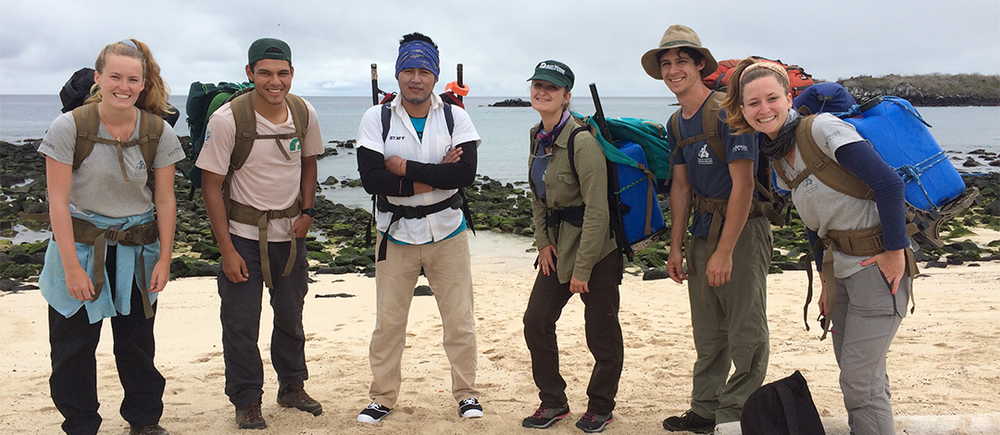
On 12th September 2018, a team from Charles Darwin Foundation (CDF) project, Galapagos Verde 2050 (GV2050) with the collaboration of the Giant Tortoise Restoration Initiative (GTRI), implemented by Galapagos Conservancy and the Galapagos National Park Directorate, travelled on an expedition to Española Island to continue the process of recovering of Opuntia megasperma population, as part of process of whole island restoration.
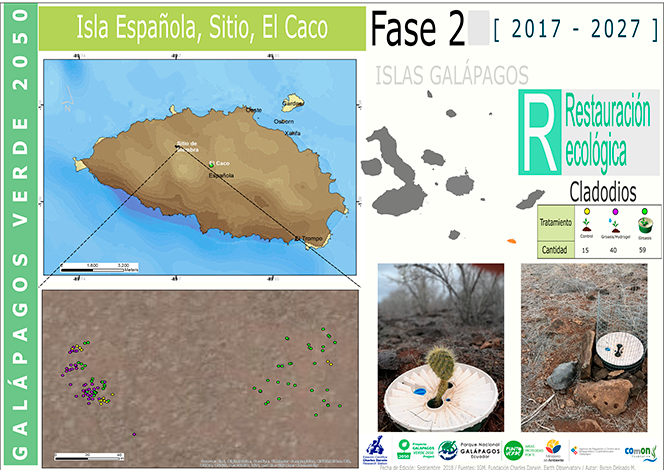
The GV2050 trip to Española began long before 4:30AM when the team left for the boat. 72 hours before this, the team had to place their belongings into quarantine, and also refrain from eating any foods with seeds. These rules were reinforced very strongly by Patricia Jaramillo, leader of the CDF project. All this was to ensure foreign seeds or insects weren´t transported within the belongings, or even within the bodies of the team, as they might become invasive and threaten the endemic and native species on Española.
We were greeted to the island only by a group of sea lions, and it was so unfamiliar to look around and not see a single pylon, building or any other human infrastructure besides the boat we arrived on. Española is the most south-eastern point of the Galapagos Archipelago, and being around 4.5 million years old it is the oldest island.
The only thing that indicated that this island wasn’t in the exact same condition as it was 200 years ago before goats introduction, was the tide pattern of plastic that was on the beach. This came as a shock, that there could be this much plastic waste on an island where people don’t even live! It was a sad reminder that although you may not be able to see pollution that you create, somewhere in the world it is having its harmful effect.
Due to the volcanic terrain, the walk to ‘Las Tunas’ was a physical challenge, for most of us, it would be an understatement to say we struggled with this aspect of the excursion - within half an hour of walking I had fallen over twice. Despite this, it couldn’t deter from the fact that we were walking on one of the oldest of the Galapagos Islands that people can only visit with a scientific permit, GV2050 is in. Washington Tapia, Director and Principal Investigator of the GTRI, encapsulated it perfectly ‘I love to think that each step I take, I could be stepping where no other human has stepped before’.
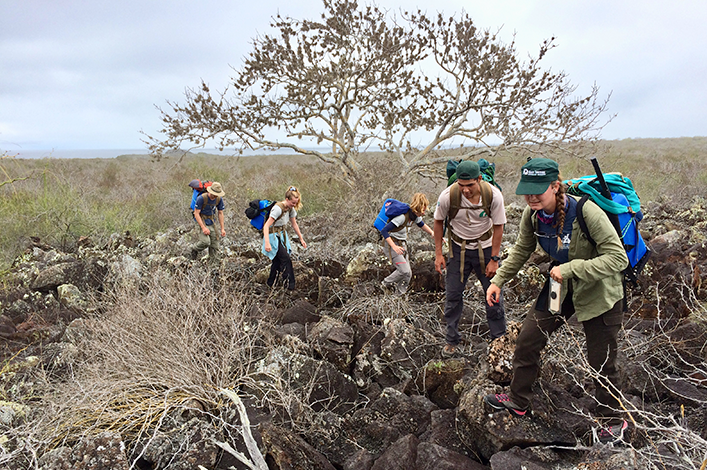
This trip was the project’s third excursion to Española. The first was in July 2017 and again in November 2017, where the GV2050 team planted cladodes of Opuntia megasperma var. orientalis using water-saving technologies (Groasis hydrogel) in an area called ‘Las Tunas’.
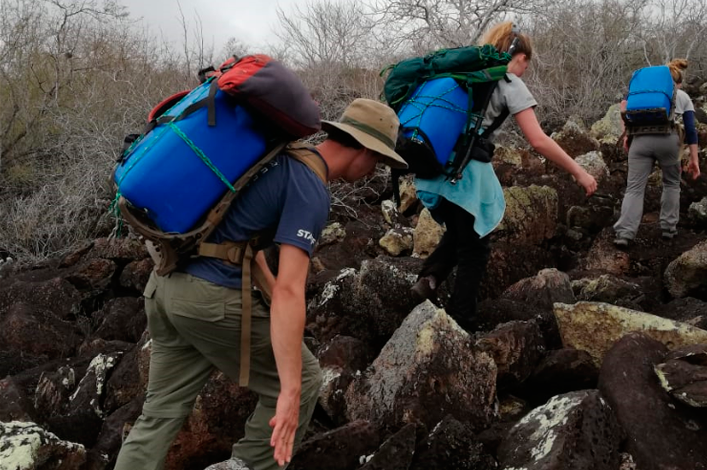
The Groasis technology is designed to increase the water availability and retention to a plant, to help with its growth during the first years of development. Hydrogel also helps to retain more water in the area surrounding the plant, to ensure the plant has a permanent supply of water, especially during dry conditions.
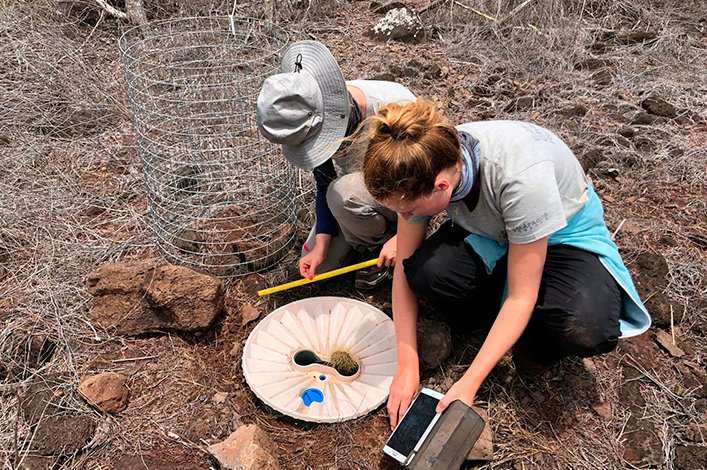
Using the georeferenced data from the previous expeditions, we inputted new data about the change in plant height, overall appearance, and new cladode or fruit growth, from all the individuals in the three study sites of ‘Las Tunas’. With this data, GV2050 will be able to monitor the growth of each of the Opuntia, a comparison of the three sites and the effectiveness of the water-saving technologies in Española. Furthermore, since it had been 10 months since the last visit, we provided new water to the Groasis to further accelerate plant development.
Thanks to the work of Charles Darwin Foundation and the Galapagos National Park Directorate there has been successful reintroduction of the giant tortoise in Española. These species and the Opuntia cactus have a very important relationship on the island (Gibbs et al., 2014), with the cacti being an important food source for the recovering tortoise population, and the tortoises promoting increased dispersal of the cacti. However, while they are young, the Opuntia have a fleshy structure, before the stems become harder over time (Guzmán and Chávez, 2007). Therefore, during this vulnerable stage, we place metal mesh around the growing Opuntia, to stop the tortoises damaging these young plants. While we were there we also identified future areas for planting, because in November 2018, GV2050 will return to the island to plant 2-year-old baby cacti, that have been extracted from tortoise excrement.
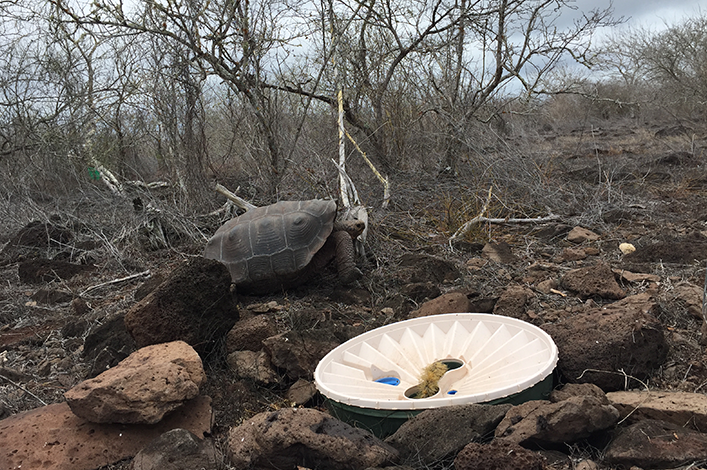
All of this work is contributing to the ecological restoration of this ecosystem on Española. It is so exciting to imagine what the landscape will look like by 2050, when the Opuntia will be able to grow without the technologies, and will support a stable population of Chelonoidis hoodensis. With Española being home to so many beautiful and endemic species, and it being one of the very few remaining places without human inhabitants, it is of upmost importance that we work to conserve this beauty. This all starts with ecological restoration, and despite the physical challenge that fieldwork demands I am so proud to be part of the work that GV2050 to restore and protect it and excited to see the progress made when I return.
GV2050 project is implemented in collaboration between Charles Darwin Foundation and Galapagos National Park Directorate. The project is financially viable thanks to the support of the COmON Foundation, The Leona M and Harry B. Helmsley Charitable Trust and the BESS Forest Club. I would also like to thank Patricia Jaramillo Díaz for her helpful insight and comments y edition on this piece and to Yasmin Redolosis for its translation.
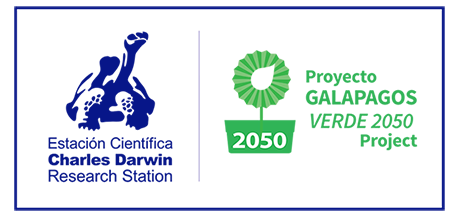
References:
Guzmán, D. & Chávez, J. (2007) “Estudio bromatológico del cladodio del nopal (Opuntiaficus-indica) para el consumo humano”, Rev. Soc. Quím. Perú. ISSN 1810-634X.





